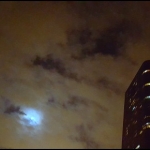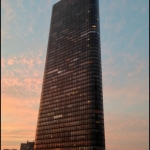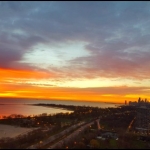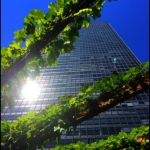One Resident’s Experiences with Medical Marijuana
December 1, 2016
by Vince DeFruscio — There are now 40 medical conditions that make one eligible for medical cannabis (marijuana), including ALS, MS, epileptic seizures, Parkinson’s disease, PTSD, HIV/AIDS, cancer, Crohn’s disease, glaucoma, rheumatoid arthritis, and fibromyalgia. An Illinois resident is also eligible if suffering from any terminal illness with a life expectancy of 6 months or less. The complete list can be found at ..
http://dph.illinois.gov/topics-services/prevention-wellness/medical-cannabis/debilitating-conditions.
There are two chemical oils found in cannabis that treat these ailments. THC, the more familiar of the two, is well-known as a pain reliever, appetite stimulant, and anti-inflammatory. THC is also psychoactive, causing a gentle “high.” Much new attention is being given to the second chemical, CBD, which is not psychoactive but has been shown to be useful as an anticonvulsant, antidepressant, anti-nausea agent and as a treatment against cancer.
Cannabis is not an opioid; it is less addictive than codeine. In fact, medical marijuana is used in some states to treat opioid addiction. Since the farms are state-licensed and inspected, it is a purer form of the drug, not laced with other narcotics. That said, it is however a hallucinogen and does affect one’s brain, coordination, and perception of the outside world. This is not a drug to be taken without consideration as to its effects.
Medically eligible for this therapy, I decided to test the waters, see what was involved, and determine how useful it would be. My goal was to find a dosage that alleviated symptoms (spasticity in my legs) without affecting the brain any more than a single beer.
The first step in the process, of course, was to file the paperwork. There is a four-page form to file electronically or by mail, found at ..
I needed to be fingerprinted and submit a passport-style photo. Among those who cannot qualify are felons and others convicted of violent crimes; anyone with a school bus permit or a commercial driver’s license; law enforcement, correctional and probation officers, and firefighters. Minors are eligible with a parent’s or guardian’s permission.
My doctor also needed to complete a form. While he did not have to recommend medical cannabis as a treatment, he did need to certify an ongoing professional relationship with me, the patient. In other words, the doctor didn’t prescribe marijuana, but rather enabled me to acquire it legally in Illinois.
Most doctors have little professional experience with cannabis and probably won’t be able to offer much advice as to the details of its use. That will come from the dispensary where you purchase your supplies. But I’ve discussed cannabis with all the medical professionals whom I see, and every one of them has been supportive.
It took about four weeks for Springfield to process the paperwork and send my card. I then had to register at a local dispensary. There is one located conveniently at the corner of Clark and Argyle. Registration having been done online, I had yet to actually step foot within the store. I had no idea what to expect.
The website (www.dispensary33.com) was extremely helpful in supplying basic information before going in. I learned that not only is there loose marijuana for sale – interestingly, what is called “weed” when illegal, is now called “flower” as a medical product – but there are many other means available to deliver the oils without smoking. This is an important consideration in a multi-family community like ours. Smoking does leave a strong residual odor, so it is discouraged inside your unit, and smoking marijuana in public is illegal.
My answer is to not smoke at all. There are edible products – think “brownies”, but in this case mostly chocolate or fruity candies – that usually take about 90 minutes to be digested. I found the anti-spasm benefit lasts for several days.
For those in great pain and needing quick-acting treatment, there are vaporizing pens which, similar to e-cigarettes, produce results in seconds and leave no ash and much less residual odor. Each item on the dispensary’s menu lists the amount of THC and CBD within, so you can learn and choose the chemical combination that works best for you.
I was pleasantly surprised by my experience at Dispensary 33. The staff was professional, and the clientele seemed to be mainly middle-aged professionals and retirees – not at all the stereotypical “drug den.” Most important, the staff at the dispensary are very helpful. Once told the benefits a person is seeking, they are adept at suggesting which products will offer the best results. A cautionary note: The exact form, dosage, and effect of cannabis will vary greatly from person to person, depending upon medical histories and the relief being sought.
I have been surprised at how little cannabis I need. A half-serving is all that’s required to treat my symptoms for three to four days. A single $10 chocolate lasts a week! And by the way, another advantage to taking edibles is that all the drug goes to use and isn’t burnt into the air.
In short, cannabis is allowing me to achieve my goal of pain relief without breaking the law or impinging on the rights of other Park Tower residents.








